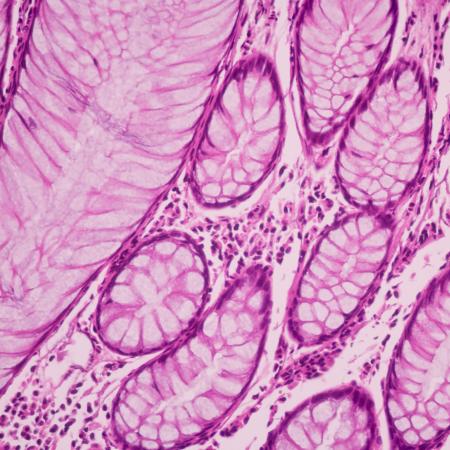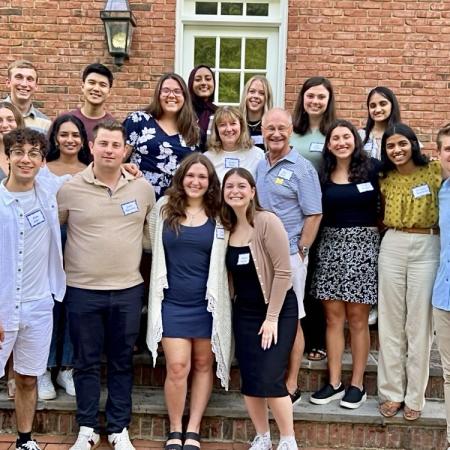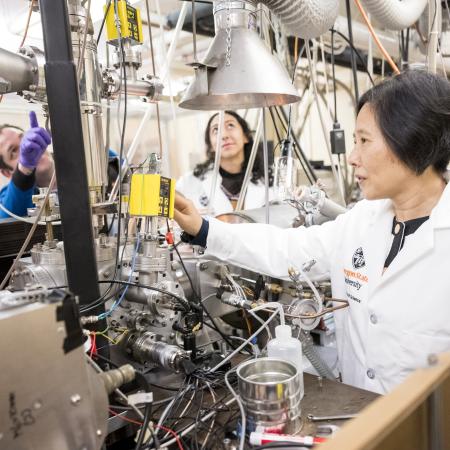The physician education pathway
Earn a bachelor's degree in any major (≥ 3.2 GPA) while you:
- Subscribe to the pre-med listserv with your OSU email account for opportunities and updates
- Take required pre-med coursework
- Take BI 109: Pre-medical Orientation (SP, 1 credit)
- Gain shadowing and patient-focused clinical experience (minimum ~1 year volunteering advised)
- Participate in extracurricular activities (i.e., Pre-med Society, other clubs, sports, hobbies, etc.)
- Volunteer in the community (can be non-healthcare)
- Build leadership skills (in any arena)
- Meet with a pre-med advisor
- Make connections with faculty (letters of evaluation)
Prepare for:
- MCAT Exam (preferably soon after pre-requisite coursework is finished). Scores are valid for 3 years.
- Application cycle after junior year (at the earliest), or after graduation. Gap/glide years are increasingly common. The average age of 1st year medical students in the United States is about 24 years old
Application timeline
This timeline should be followed the year leading up to your application to medical school/graduating. The earliest you can apply is after junior year, for matriculation after your senior year. Discuss your preparedness to apply with your pre-med advisor.
November
- Attend the fall application meeting. Meeting date and time will be announced on the pre-med listserv
January–May
- Request letters of recommendation from faculty, physicians, volunteer coordinators, supervisors, etc. (at least two science faculty and one physician)
- Take the MCAT (score ≥ 500 to apply) no later than July of the summer you are applying
- Attend the winter application seminar (Feb or March)
- Evaluate readiness and then decide whether to proceed with application. If delaying, letters will be kept until you are ready to apply (up to 5 years)
- Schedule an appointment with your regular advisor to discuss your application. Discuss committee letter plans.
- Create profile on Health Professions Portal and complete intake form winter/spring term before summer you are applying/graduating (Note: College of Health uses a different process)
- Schedule a meeting with a pre-med committee coordinator advisor who will help you review readiness to apply. Sign form to open pre-med file.
- Work on personal statement
June-August
- AMCAS/AACOMAS applications open for submission by early to mid-June
- Submit AMCAS and/or AACOMAS application by mid-July
- Advisor writes committee letter and pre-med committee uploads letters of evaluation to AMCAS/AACOMAS
Letters can be submitted after applications submitted. Letters are not usually reviewed until after secondaries received
July–September
- Student receives secondary applications from schools
- Prepare for interviews
September–April
- Student interviews at interested schools
- Be sure to meet financial aid deadlines
April 30
- Student will know if they were accepted, rejected, or waitlisted
- After this date, students may not hold more than one seat in medical school
- Pre-med committee advisor can meet with students who were not accepted to discuss reapplication strategy
Students should usually wait a year to reapply. If you haven’t greatly improved your application, you should wait to reapply. Students need to show growth and changes from one application to the next. Talk to your advisor and a pre-med committee coordinator about your preparedness for reapplication.
Core personal competencies for entering medical students
Interpersonal competencies
Service orientation: Demonstrates a desire to help others and sensitivity to others' needs and feelings; demonstrates a desire to alleviate others' distress; recognizes and acts on his/her responsibilities to society; locally, nationally, and globally.
Social skills: Demonstrates an awareness of others' needs, goals, feelings, and the ways that social and behavioral cues affect peoples' interactions and behaviors; adjusts behaviors appropriately in response to these cues; treats others with respect.
Cultural competence: Demonstrates knowledge of socio-cultural factors that affect interactions and behaviors; shows an appreciation and respect for multiple dimensions of diversity; recognizes and acts on the obligation to inform one's own judgment; engages diverse and competing perspectives as a resource for learning, citizenship, and work; recognizes and appropriately addresses bias in themselves and others; interacts effectively with people from diverse backgrounds.
Teamwork: Works collaboratively with others to achieve shared goals; shares information and knowledge with others and provides feedback; puts team goals ahead of individual goals.
Oral communication: Effectively conveys information to others using spoken words and sentences; listens effectively; recognizes potential communication barriers and adjusts approach or clarifies information as needed.
Intrapersonal competencies
Ethical responsibility to self and others: Behaves in an honest and ethical manner; cultivates personal and academic integrity; adheres to ethical principles and follows rules and procedures; resists peer pressure to engage in unethical behavior and encourages others to behave in honest and ethical ways; develops and demonstrates ethical and moral reasoning.
Reliability and dependability: Consistently fulfills obligations in a timely and satisfactory manner; takes responsibility for personal actions and performance.
Resilience and adaptability: Demonstrates tolerance of stressful or changing environments or situations and adapts effectively to them; is persistent, even under difficult situations; recovers from setbacks.
Capacity for improvement: Sets goals for continuous improvement and for learning new concepts and skills; engages in reflective practice for improvement; solicits and responds appropriately to feedback.
Thinking and Reasoning Competencies
Critical thinking: Uses logic and reasoning to identify the strengths and weaknesses of alternative solutions, conclusions, or approaches to problems.
Quantitative reasoning: Applies quantitative reasoning and appropriate mathematics to describe or explain phenomena in the natural world.
Scientific inquiry: Applies knowledge of the scientific process to integrate and synthesize information, solve problems and formulate research questions and hypotheses; is facile in the language of the sciences and uses it to participate in the discourse of science and explain how scientific knowledge is discovered and validated.
Written communication: Effectively conveys information to others using written words and sentences.
Science competencies
Living systems: Applies knowledge and skill in the natural sciences to solve problems related to molecular and macro systems including biomolecules, molecules, cells, and organs.
Human behavior: Applies knowledge of the self, others, and social systems to solve problems related to the psychological, socio-cultural, and biological factors that influence health and well-being.



